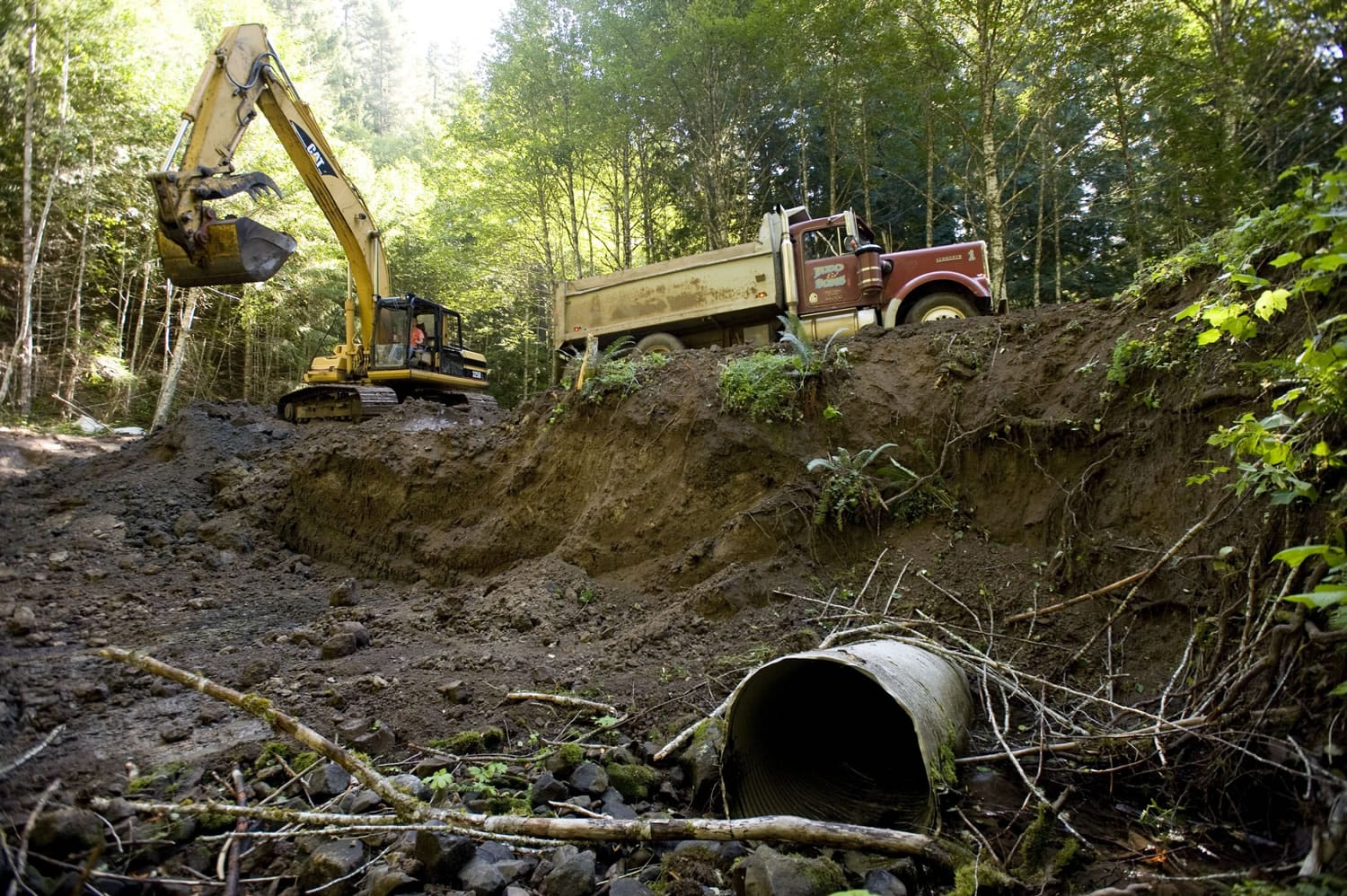1990
Budget: $50 million.
Employees: 750.
Timber volume sold: 689 million board feet.
Ranger districts: 5.
2010
Budget: $17.8 million (plus $15.8 million in one-time stimulus funds and grants).
Employees: 171.
Timber volume sold: 16.5 million board feet.
Ranger districts: 3.
Value of partnerships: $4.1 million.
Collaborative groups: 3.
Back before the spotted owl, the salmon and ecosystem management changed the rules of the game, the Gifford Pinchot National Forest was one of the biggest timber producers in the Northwest.
The numbers tell the story.
In 1990, the 1.3-million-acre national forest in Vancouver’s backyard sold 689 million board feet of timber, enough to fill more than 1.2 million log trucks. The 1994 Northwest Forest Plan whittled that to 52 million board feet, a target the forest never met. In 2010, the forest sold 16.5 million board feet. This year, it sold 25 million board feet, slightly above its current goal.
In the late 1980s, before legal injunctions to protect the northern spotted owl and other species ushered in a new era in federal forest management, the forest service employed 750 at Gifford Pinchot headquarters in Vancouver and five ranger districts. The forest pumped tens of millions of dollars into the U.S. Treasury and had an operating budget of approximately $50 million.
Last year, the forest had a budget of $33 million, temporarily swelled by $15.8 million in stimulus funds and grants, and employed 166 permanent and 65 seasonal employees. Since 1990, its five ranger districts have been consolidated into three. The building that housed the Packwood Ranger District, where 60 to 80 Forest Service workers were based in the late 1980s, has been sold. It now houses a tool rental business.



